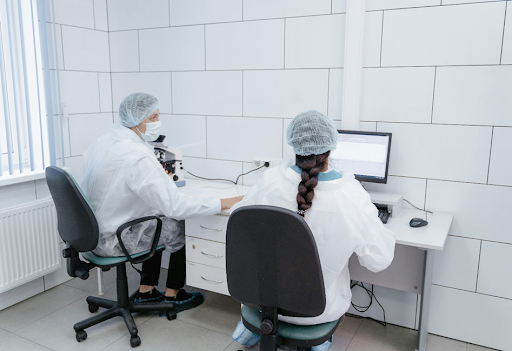
Historically, it’s been a challenge to prevent art theft even when the security of the most famous creations in the world hung in the balance. When Vincent van Gogh’s painting of poppy flowers was stolen in 1977, right out of the Mohamed Mahmoud Khalil Museum in Egypt, nobody could have imagined that it would be recovered in Kuwait a decade later, and then stolen once again from it’s Cairo home in 2010.
The mind marvels in a similar way at the failure to prevent jewelry theft by the infamous Pink Panther gang, who have made off with roughly $US1 billion in sparkling European treasures over the course of the last four decades.
But technology is finally catching up with these bad actors, making it more difficult than ever for them to traffic their loot and evade capture. Only last year, Interpol caught up with and arrested Pink Panther gang members in Spain, ensuring a sigh of relief among jewelry dealers across the continent.
But the advent of new tech doesn’t just mean greater capability in tracking and locating stolen goods and perpetrators. It also means far greater capacity to protect our most prized and valuable assets in the first place. Check out this exciting tech, accessible to collectors everywhere, and created to prevent art theft and jewelry theft for good.Collectors Prevent Jewelry Theft and Art Theft with Tiny Tracking Devices
These days, a heist like the one carried out in Cairo—twice—would be a far riskier endeavor for the criminals thanks to the introduction of cutting-edge tracking devices, designed to be used to tag a broad range of valuables.
These minuscule gadgets are so small that they can be hidden permanently in paintings and sculptures to prevent art theft, or inserted invisibly into cases to prevent jewelry theft. Thanks to discreet design, potential thieves are none the wiser. Although, as word gets out that there’s no clean getaway with precious one-of-a-kind assets of this nature, even the most determined racketeers pause for thought.
So how do these tiny trackers work, exactly? Costing only a tiny fraction of the value of the incredible creations they have been designed to protect, tracking devices work either using GPS location or long-range, Radio Frequency Identification (RFID)—or a combination of the two. This tech innovation means that masterpieces can not only be tracked in realtime, but that collectors, museums, and gallery owners can establish user defined perimeters and set up automatic alerts, either to themselves or the police, if the art or jewelry in question crosses over their threshold. Clever tech indeed.
It’s Never Been Easier to Prevent Jewelry Theft and Art Theft—or Catch the Criminals at Large
This exciting evolution in the effort to prevent art theft and safeguard our most precious jewels is only a small part of a much larger expansion of protective possibility. Improved home security systems and the advent of INTERPOL’s Stolen Works of Art database are also contributing to shrinking the prospects of potential thieves.
Even the smartphones of criminals themselves are working against them, as geolocation data is pulled from images taken to sell art and jewelry online, and police or private investigators track them down when they thought they’d got away clean.
Are you doing all you can to prevent jewelry theft and art theft? Your most prized assets represent not only significant monetary value, but sentimental value too. Skilled and specialized private investigators from Lauth Investigations International are always on hand to provide comprehensive risk and security assessments. We can identify vulnerabilities and help you close the door to criminals who might otherwise target your possessions. And of course, should the worst have already occurred, our team of investigative trackers are ready to locate and return your items. Whatever your concerns, reach out to our team today for no-commitment insight into how we can assist.



